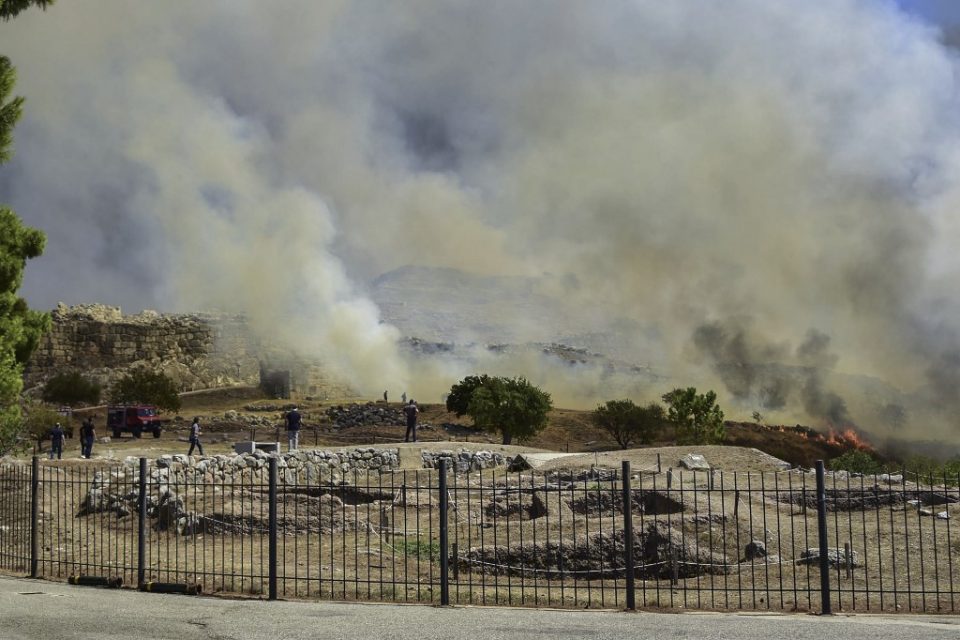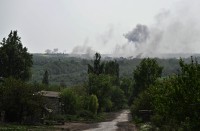
ATHENS, Greece (AFP) — One of Greece’s most important archaeological sites escaped serious damage after firefighters tamed a wildfire that lashed the surrounding countryside, officials said on Monday.
The fire erupted at noon on Sunday near the ruins of Mycenae, one of the centres of ancient Greek civilisation, about 120 kilometres (75 miles) south-west of Athens, prompting the evacuation of visitors and staff.
“The damage caused to the archaeological site was the least possible, as the fire service acted swiftly and dry vegetation from the area had been cleared away,” Culture Minister Lina Mendoni said after inspecting the area.
The flames licked the Bronze Age ruins near the tomb of Agamemnon, the king of Mycenae and leader of the Greek city-state forces during the Trojan War.
The second millennium BC fortress city was one of the major centres of ancient Greek civilisation.
Photos on Monday showed the 3,250-year-old stone Lion Gate, the entrance into the ancient city, blackened by smoke.
The site remained closed to visitors on Monday, but the archaeological museum has reopened.
Mendoni said the site would also reopen soon, adding that the “visitors will see only a little burnt grass on the ground”.
Greece grapples with wildfires every summer, with strong winds and temperatures frequently exceeding 30 degrees Celsius (86 degrees Fahrenheit).
Thirteen years ago, a fire threatened the temples and stadiums of ancient Olympia, birthplace of the modern Olympic Games.
Firefighters were able to save the site, but dozens of people in the broader area died.
© Agence France-Presse






